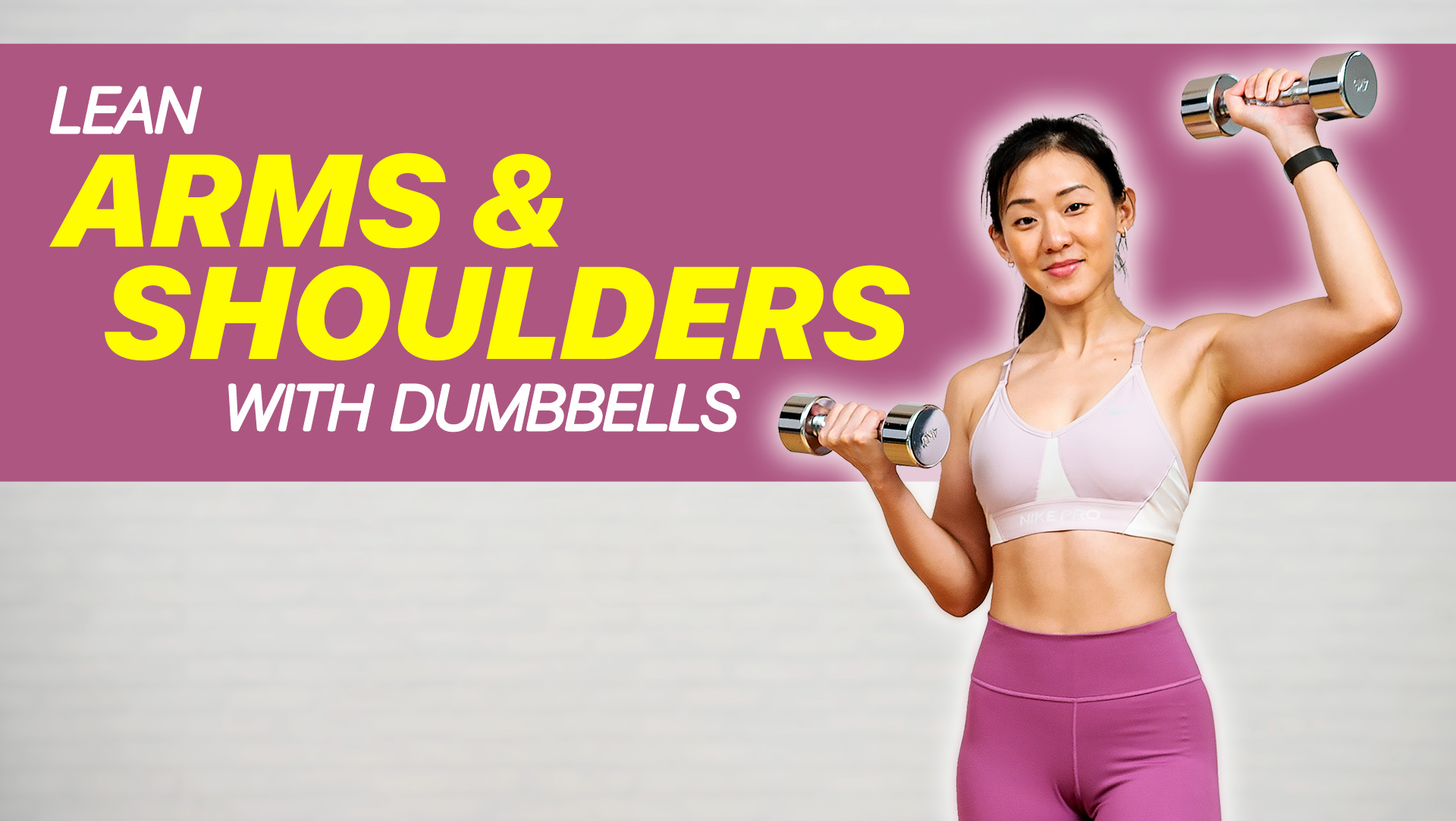So you want to start a workout programme and lose weight. But where do you start? How? What exercises should you do?
Well to be perfectly honest, I don’t have one straight answer for everybody because creating an exercise programme varies based on your age, goal, fitness level, free time and more.
So what I’ll be sharing with you today is the foundation for beginners to start a simple yet effective workout programme. It might sound daunting, but once you know the basic and build from there, it isn’t difficult, in fact it’s a lot of fun.
I’m going to try to keep it really simple and break it down into 5 steps. So grab a paper and pen, and take down these key points.
1) Assess your situation – How many days should I workout
The 1st step is to assess your situation because YOU will know what’s best for yourself.
So the questions to ask are how much time can you dedicate to exercising? How many days in a week and what time of the day?
How much time can you dedicate to exercising?
If you can dedicate 1 hour everyday, that’s great. But if you’re tied down to work or family commitments, and can only spare 15 to 30 minutes a day, that’s absolutely fine as well.
Working out for a longer period of time, doesn’t necessarily equate to better or quicker results, instead, it’s about how consistent and efficient your workout is, in order to achieve results.
So for instance if you’re a busy working mum with tight commitments and can only spare 10 – 20 minutes a day, well start with that! No matter how short your workout is, you will still burn calories and build lean muscles. A short effective workout is better than none.
So whatever your time commitment is, work with that, be consistent and have discipline. Successes do come with hard work, determination and giving yourself NO EXCUSES! I’ve had so many success stories from people who can only spare 10 – 20 mins of workout a day. But because they were consistent, they saw results.
So even before starting a workout programme, physically and mentally, you have to be ready and willing to make changes in your life.
When should I workout?
And another common concern is “What is the best time to workout?” Again, it goes back to assessing your situation. There’s no such thing as ‘the best time to workout’. I believe in exercising when it’s most convenient to you because that way, you’re more likely to stick to your routine. So if morning is best for you, then stick to the morning, if evening works better, then keep your workout to the evening.
So start by assessing your situation and see how you can make small lifestyle changes. I’m not asking you to take drastic measures or make huge sacrifices, instead work with your situation, adapt and create a workout time that’s most efficient for you.
Now that you have figured out your commitment and you’re ready to make changes, the second step is to figure out “What exercises should I do?”
2) What exercises should I do?
This can be the confusing part. Well a typical workout routine would consist of
Warmup --- The actual workout --- And end with cool down
For beginners, it’s important to perform total body workouts focusing on major muscles in order for your body to burn fat efficiently. It’s important to know that we CANNOT SPOT REDUCE FAT! What this means is that doing 100 crunches daily, will not give you a flat tummy. Instead, performing total body workouts focusing on all major muscles WILL help to burn belly fat and fat from other parts too.
So an example of a workout plan can be:
MON, WED, FRI – Strength Training
TUES, THURS, SAT – Cardio
SUN – Rest Day
What’s the difference between Strength Training and Cardio?
Strength Training or Weight lifting
Are exercises aimed at improving your strength and to build lean muscles. Strength training is important because the more lean muscles you have, the higher your metabolism will be and your body will be burning fat more efficiently even when you’re at rest.
Examples of workout include push-ups, squats, lunges, tricep dips, pull ups and more.
Cardio or Aerobics
Exercises that are intense enough to increase your breathing and heart rate at a continuous and consistent pace. This include running, cycling, brisk walking, swimming, dancing, hiking and more.
Cardio exercises are important to build stamina, to burn calories and excess fat from the body.
So a combination of both cardio and strength training is key in losing weight and to achieve quicker results.
If you were to alternate between strength training and cardio workouts, here’s a good plan to start by using my videos:
For MON, WED & FRI’s Strength Training, pick:
- 1 or 2 lower body strength training videos from my Toned Legs, Thighs and Bum playlist and
- 1 or 2 upper body strength training videos from my Toned Arms, Chest, Back & Shoulders playlist here and
- 1 core training video from my Toned Abs playlist here.
As for TUES, THURS & SAT – pick a cardio active you enjoy, either running, cycling, swimming or more.
And have Sunday as your rest day for your body to recover and build lean muscles.
If however, you can’t fit 5 – 6 days of workout and can only manage 3 – 4 days, then I would suggest combining both strength and cardio training into your routine.
So you can either:
- start with 20 mins of running then do your strength training according to the playlist I mentioned.
- Or if you are really tight on time and want a short, intense and efficient workout, then I would suggest for you to check out my Cardio + Strength Fat Burning Playlist here.
All the videos on that playlist are circuit / interval training, which combine both strength and cardio, targeting all the major muscles at once.
They are mostly time-based workout with very short rest time in between exercises to increase your heart rate. So circuit / interval training are some of the most effective and efficient way to burn fat in a short period of time.
3) How many reps, sets and rest time?
The 3rd step is to understand how many reps, sets to do, how heavy to lift and how long to rest in between exercises.
These are mainly for Strength Training.
“Sets” refer to repeating the same exercise a certain number of rounds. For instance, performing 10 squats is one set and you may want to repeat it for another 2 more sets with rest in between sets.
For beginners, I would suggest that you start with 2 sets. And as you progress, increase to 3 or 4 sets per exercise.
Repetitions or “reps” refers to the number of time you perform an exercise during a set. So for instance, it can be 10 reps of squats. How many reps you should perform varies depending on your goal and fitness level.
For beginners if you’re looking to burn fat while building some muscle, try to keep the repetitions per set between 8 – 15.
This that leads to how heavy should you lift?
The best way to determine is if you can do more than 15 reps for an exercise without much of a challenge, well it’s not difficult enough for you and the weights aren’t heavy enough. So you’ll need to add more weights or alter the exercise to make it tougher.
The weights used should be heavy enough for you to perform between 8 – 15 reps.
How long should you rest in between sets?
If you are performing high reps, then rest for 1 minute or less. Beginners, you can start by resting 1 minute in between sets. And as you progress, reduce your rest time to 45 secs, 30 secs and even 15 secs.
Keeping an eye on your rest time is crucial to burn fat efficiently. Shorter rest time, means you’ll be keeping your heart rate high throughout the workout, hence turning it into a burning machine.
If however you were to rest too long, for instance 2 minutes or more, then chances are you’ll be dropping your heart rate hence burning less calories than you should be.
So pace yourself out and start with longer rest time and as you progress, reduce the rest time and push yourself further. This then lead on to step 4.
4) Keep track of your workout
This is a great way for you to know you’ve progress.
So have a fitness journal and keep track of every single workout. A typical fitness journal would consist of time and date, exercise duration, each workout you did, weights used, number of reps, sets and rest time
Remember keeping track of your workout is one of the most important way you’ll know you have progressed and this will also help you stay accountable to your goal. For instance, you’ll know if you managed to fit in 5 days workout per week as planned or if you sticking to a healthy meal plan. These information are key to show you results and to keep you going.
5) Repeat
And with all these steps and knowledge, nothing would count if you don’t take action and repeat the steps.
SO TAKE ACTION and repeat. Practice makes perfect. Choose your workout videos on my channel, build your programme and repeat the same routine for the next 4 – 6 weeks. For beginners, remember it takes at least 4 – 6 weeks for your body to adapt to a workout routine and see progression. Stick by the plan, and you will only get stronger from when you started.
And don’t forget to share, keep track of your progress and stay inspired on PUMP UP! You’ll be amazed with the changes both physically and mentally. I would also encourage you to watch my “7 Steps to Permanent Weight Loss” video to guide you in this journey. Link is at the end of my video. So allow me end with my all time favourite quote, "Don't wait until you've achieved your goal to be proud of yourself, be proud of yourself for every step you take towards your goal." All the best!



